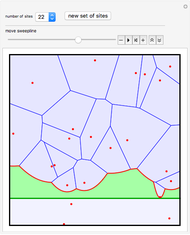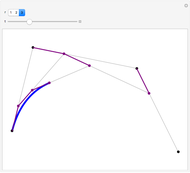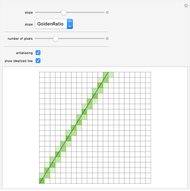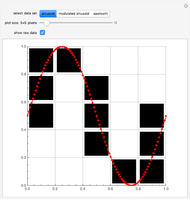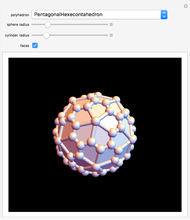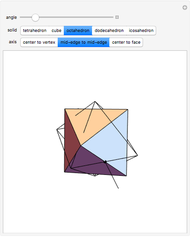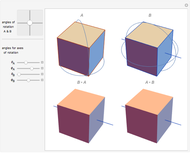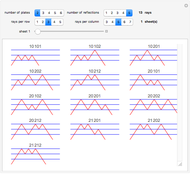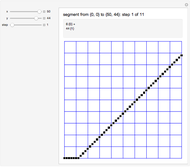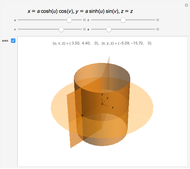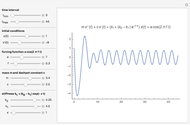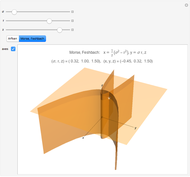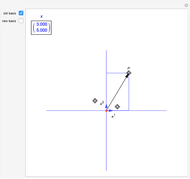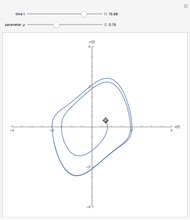The Best-Fit DDA Algorithm

Requires a Wolfram Notebook System
Interact on desktop, mobile and cloud with the free Wolfram Player or other Wolfram Language products.
The Best-Fit DDA is an algorithm for converting a segment into a nice-looking sequence of pixels. The conversion of a segment from  to
to  with
with  involves a sequence of steps. At each step the segment is approximated by the concatenation of
involves a sequence of steps. At each step the segment is approximated by the concatenation of  copies of a path
copies of a path  with
with  copies of a path
copies of a path  . Initially,
. Initially,  ,
,  ,
,  (a single horizontal increment), and
(a single horizontal increment), and  (a diagonal increment). Update: if
(a diagonal increment). Update: if  then
then  ,
,  , else
, else  ,
,  The algorithm terminates when
The algorithm terminates when  .
.
Contributed by: Adriano Pascoletti (March 2011)
Open content licensed under CC BY-NC-SA
Snapshots
Details
This is a fast algorithm used in raster-scan systems. It is based on the subtractive version of Euclid's algorithm for the computation of the GCD of two positive integers  and
and  . The classical algorithm of Bresenham for drawing line segments is strictly related to the optimal placement of
. The classical algorithm of Bresenham for drawing line segments is strictly related to the optimal placement of  leap years in a cycle of
leap years in a cycle of  years, and both are related to the Best-Fit DDA via Euclid's algorithm for the GCD of
years, and both are related to the Best-Fit DDA via Euclid's algorithm for the GCD of  and
and  and the continued fraction expansion of
and the continued fraction expansion of  .
.
The Best-Fit DDA is described in Sect. 2.5 of D. Salomon, Computer Graphics and Geometric Modeling, New York: Springer-Verlag, 1999.
The Best-Fit DDA is due to C. M. A. Castle and M. L. V. Pitteway, "An Application of Euclid's Algorithm to Drawing Straight Lines," in Fundamental Algorithms for Computer Graphics, (R. A. Earnshaw, ed.), New York: Springer-Verlag, 1985 pp. 135-139.
The striking connections among Bresenham's algorithm, leap years, and Euclid's algorithm are discussed in M. A. Harris and E. M. Reingold, "Line Drawing, Leap Years, and Euclid," ACM Computing Surveys, 36(1), 2004 pp. 68–80.
Permanent Citation






